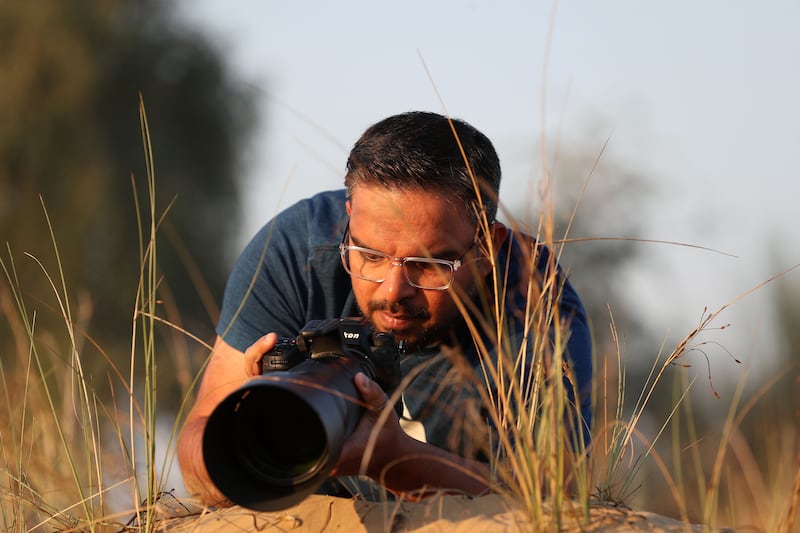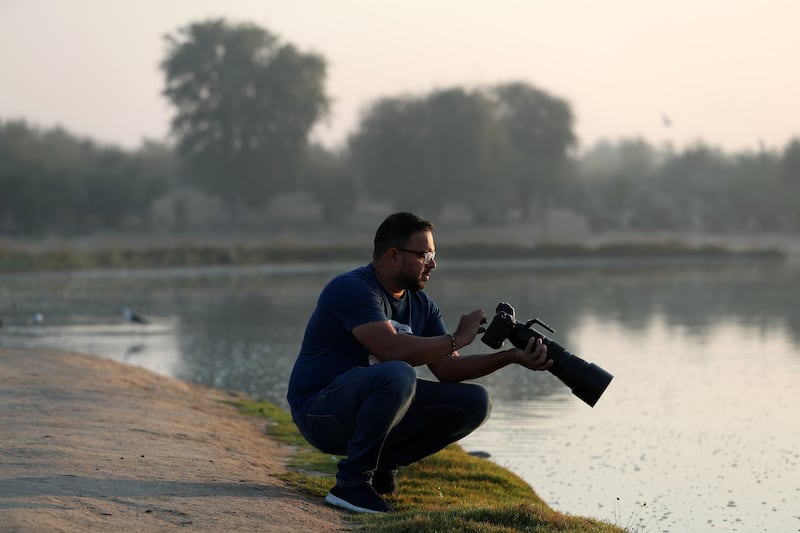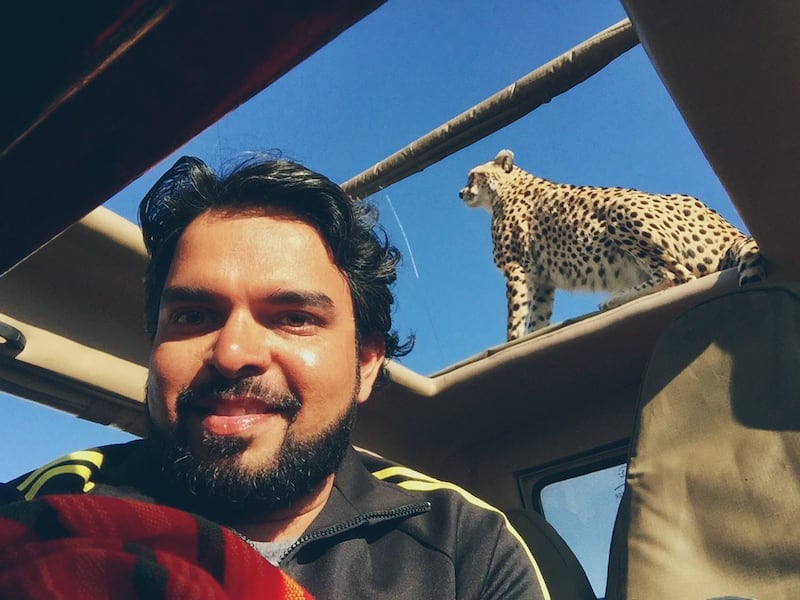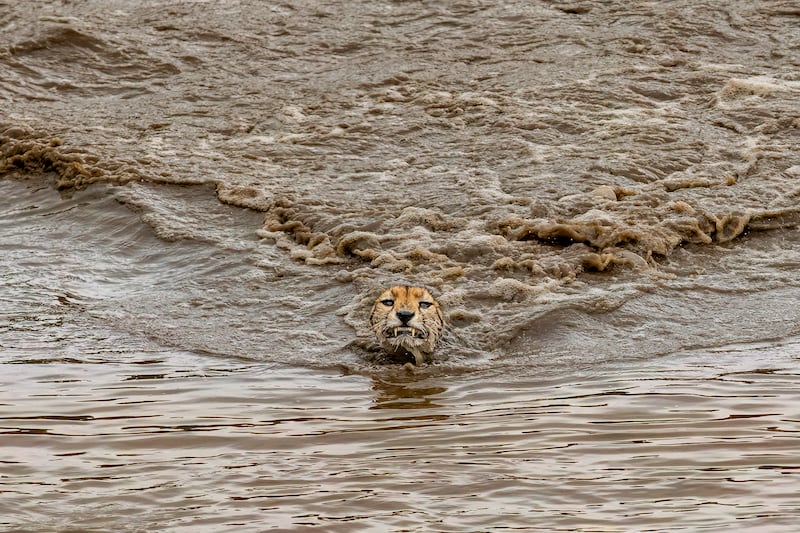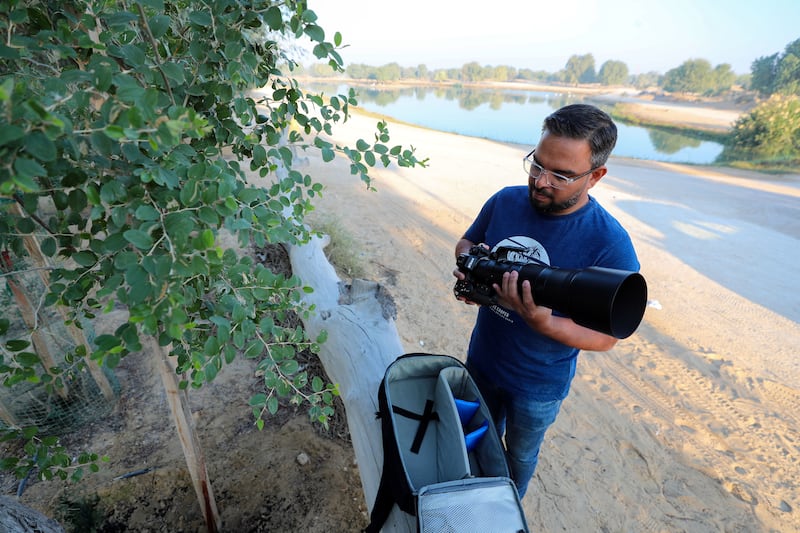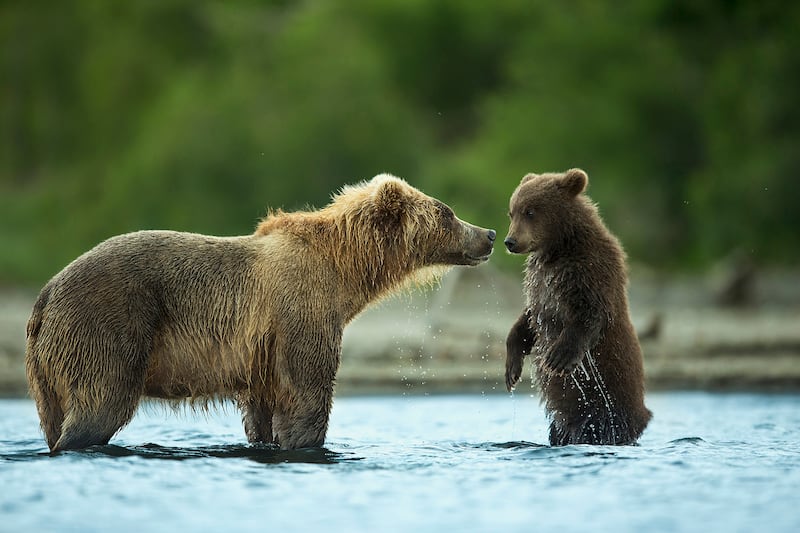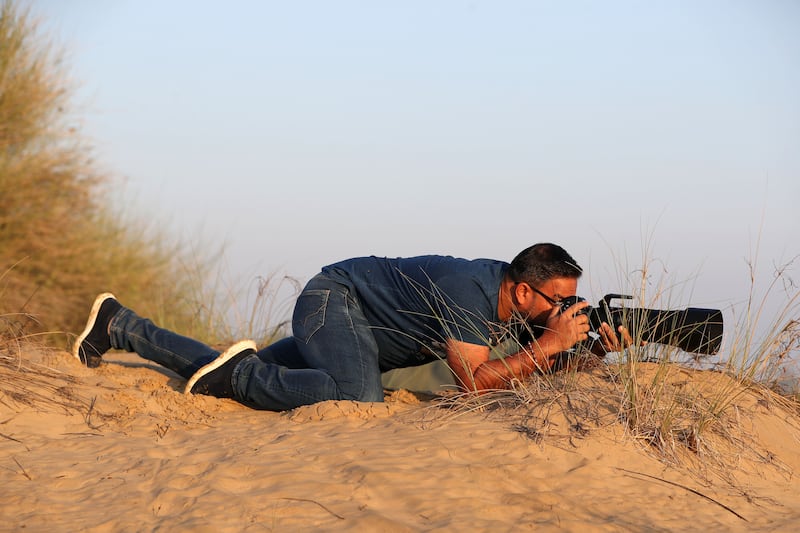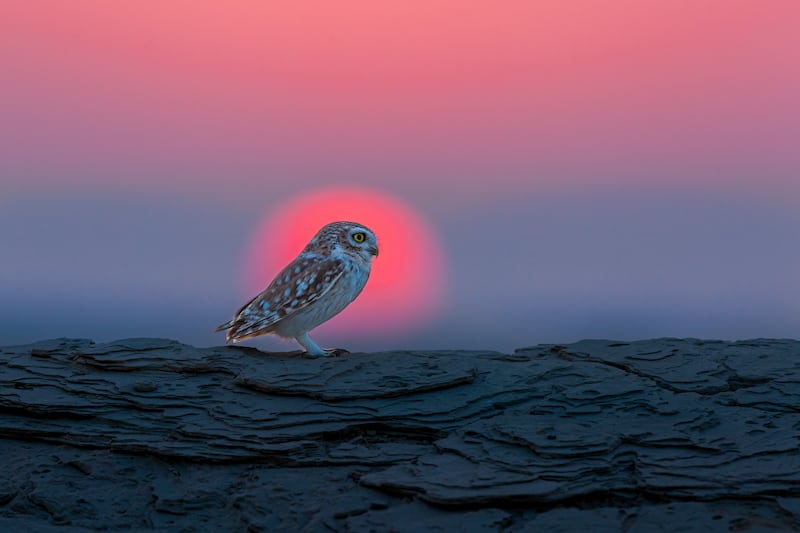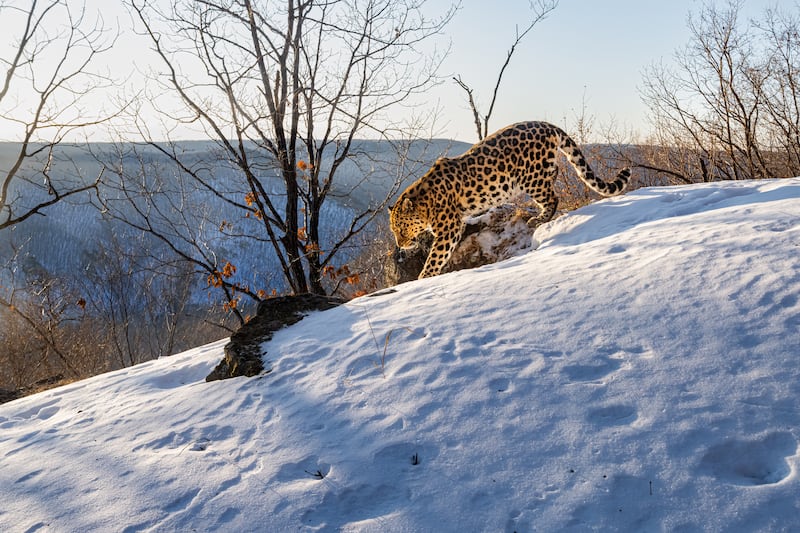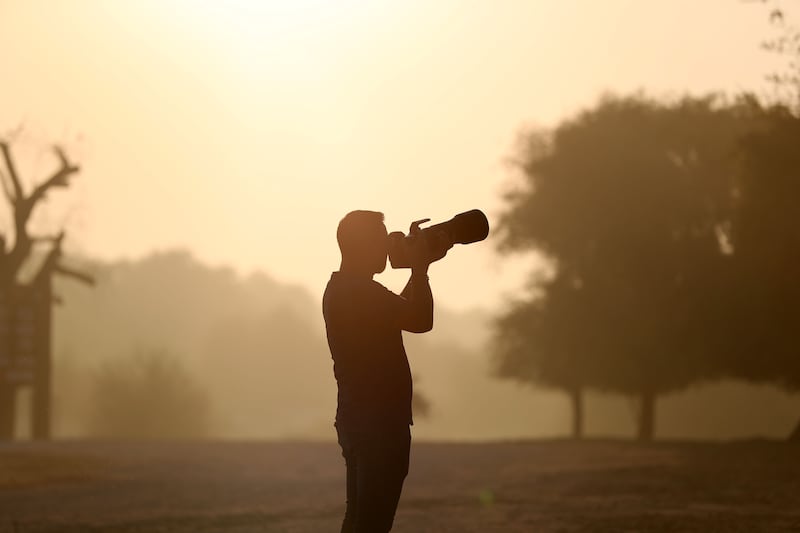“A Day in the Life” allows you to step into the shoes of a UAE resident to experience a typical 24 hours in their work and home life
Photographer Hermis Haridas swapped the office for the Dubai desert, with gazelles, Arabian oryx and native birds now his colleagues.
The former digital programmer from India bade farewell to corporate life 14 years ago to commit to his self-taught hobby full-time.
Today, the 40-year-old is the proud owner of a dedicated photography lodge in Kenya called Mara Trails Camp, which supports the local school and community. He also leads weekly photography groups in the UAE, known as Paws Trails.
In November, his image of a native hoopoe at Dubai’s Al Qudra Lakes won four international photography awards, including the Nature Photography of the Year’s bird category.
Here, The National joins him for a day in the desert to get up close and personal with wildlife.
4am: Up with the larks
Mr Haridas wakes in the darkness to prepare his equipment and leave the house by 4.30am.
“Wherever I go, I have to be there before sunrise to find a good spot and set up with plenty of time to spare,” he says.
“Often if I’m in Dubai I’ll go to Al Qudra Lakes to shoot migratory birds. The nature is flourishing there and it’s a photographer’s paradise.”
Mr Haridas originally tried photography as part of a weekly group, tagging along without a camera of his own.
“We used to go and cover all sorts of scenarios like street photography, portraits, architecture and landscape. At first, I just watched and eventually I bought some very basic equipment,” he says.
“After almost two years, I started shooting birds and then I travelled to the Masai Mara [in Kenya] in 2010. That was a turning point in my life.”
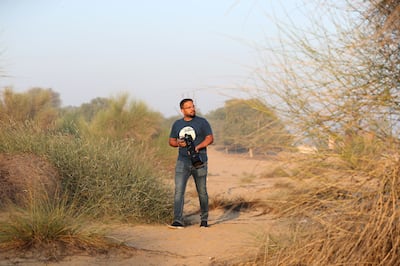
7am: Capturing the golden hour
For Mr Haridas, the best time to capture wildlife is at sunrise – when the animal kingdom comes to life – but he's acutely aware that time is everything.
“The main thing you need to keep in mind for wildlife photography is patience,” he says. “It’s a time-consuming genre because you need to spend hours to get a particular shot.
“One time I waited for nine hours in the Masai Mara to catch a leopard coming down from a tree. You must be very vigilant about what is happening around you because, in a split second, you could miss everything.”
11am: Rest and recalibrate
After the first two sunlit hours of the day, Mr Haridas eats breakfast and then heads home to assess his morning camera roll before preparing his equipment for the afternoon’s adventure.
As well as the UAE and Kenya, Mr Haridas also visits Sri Lanka, Mongolia and Russia throughout the year.
“I’ve experienced a lot of close encounters on my travels. In Tanzania and the Masai Mara I’ve had very close encounters with cheetahs,” he says.
“Once, a cheetah jumped on my open-top Land Cruiser and started sniffing my head. I could feel its breath. It was terrifying but I still managed to take a selfie.
“I’ve also had some close shaves with brown bears in the northern peninsula of Russia. I found two very tiny, cute baby bears, almost like teddy bears.
“I got very close to them and lay down to shoot, then suddenly, the mother bear appeared from nowhere in my frame. I was literally shaking.
“Luckily we had a ranger with us who scared her away but at one point she was 10 metres away from us.”
4.30pm: Sunset and chill
During the typical evening session, Mr Haridas tracks Arabian oryx in pursuit of the perfect sunset shot.
“To capture an oryx in the dunes as the sun sets is a beautiful sight,” he says. “Often, I’ll head back into the desert in the evening to try my luck. It’s so peaceful out there and I feel all my stress just melt away.”
Mr Haridas is also a keen conservationist and encourages his Paws Trails students to respect the animals they pursue.
“You need to understand animal behaviour,” he says. “If you're going to shoot birds, you need to understand how to approach them, how to treat them and how to protect their environment.
“A lot of people just go and buy a camera and start shooting. You need to find a good mentor or a good source and educate yourself.”
As well as supporting local wildlife, Mr Haridas has used his photography skills to help benefit communities abroad.
“In 2021 I started the Mara Trails Camp in the Masai Mara, which supports the local community,” he says.
“We give 50 per cent of our profit to the community and we provide uniforms and food for schoolchildren every day.
“Photography has given me so much and it’s important to give some of that back.”
More information about Mara Trails Camp is at maratrails.com and the Paws Trails expedition is at @hermis.haridas.
